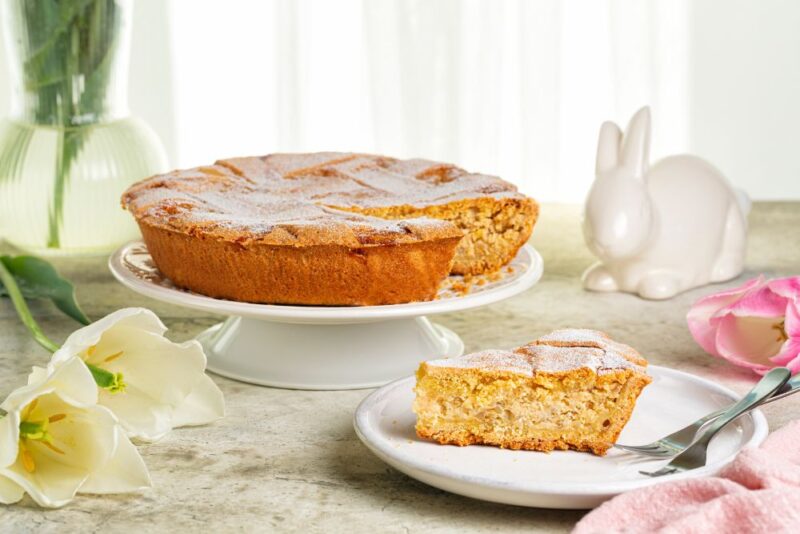Navigating the Surge of Seasonal Allergies: A Dietary Perspective

Seasonal allergies, or hay fever, as they are commonly referred to, often make the beautiful springtime a dreaded time for those most affected. Ugh! We are tired of the cold and want warmer temperatures and beautiful growth on shrubs, trees, grass, and then the popping flowers. Then the runny nose, itchy eyes, and breathing difficulties kick in … and then we long for the end of this new growth season
We take allergy pills, put allergy drops in our eyes, and call the doctor for the inhaler. Many opt for season allergy shots so that their bodies won’t react as much. But is that the best approach? Are there side effects to taking all this stuff?
What if what if your diet is contributing to your distress? What if you could reduce or eliminate certain foods to minimize your body’s reaction to these higher pollen seasons?
In recent years, we’ve witnessed a significant uptick in the prevalence of seasonal allergies, a trend that has not only puzzled many but has also intensified the search for effective remedies and preventive measures. Experts from various fields, including immunology, environmental science, and nutrition, have been delving deep into this phenomenon, seeking to understand the why behind this surge and how we might counteract its impacts. Amidst this quest, a growing body of evidence is pointing towards the power of dietary interventions in mitigating allergic reactions, offering a beacon of hope for millions grappling with the seasonal scourge.
In an interview recap with Dr. Zachary Rubin of Oakbrook Allergists, they write, “Scientists say intensified seasonal allergies are among the first wave of anticipated health impacts from global warning, along with greater exposure to infectious diseases. Recent studies have revealed that growing zones in the US are shifting as the climate warms, allowing plants and trees to expand their ranges. Rising temperatures are also allowing plants to bloom earlier and longer, prolonging pollen seasons. Increased rainfall means plants release more pollen when they bloom, and higher numbers of thunderstorms cause pollen grains to burst, making them more irritating and worsening symptoms.” (1)
Seasonal allergies, also known as hay fever or allergic rhinitis, affect a vast swath of the population worldwide, with symptoms ranging from mild irritations to severe, life-disrupting conditions. Dr. John Smith, an immunologist at the Global Health Institute, notes, “Over the past decade, we’ve seen a marked increase in allergy cases, a trend that correlates strongly with changing environmental conditions.” Studies suggest that factors such as climate change, pollution, and urban sprawl contribute to longer allergy seasons and more potent allergens in the air. (2)
Experts attribute the increase in seasonal allergies to several key factors:
- Climate Change: Warmer temperatures extend the growing seasons of plants, leading to prolonged periods of pollen production. “Climate change is not just a global health emergency; it’s also exacerbating our seasonal allergies,” explains environmental scientist Dr. Linda Green.
- Pollution: Air pollutants can enhance the allergenicity of pollen, making it more likely to trigger allergic reactions. Pollutants from vehicles and industrial activities merge with pollen, creating a more potent allergen.
- Lifestyle Changes: Modern lifestyles, including increased time spent indoors, have led to decreased exposure to diverse microorganisms, potentially impacting our immune system’s ability to tolerate allergens.
This is when I want to draw your attention to the factors that are not being attributed to the increase in seasonal allergies. It is easy to blame ‘mother nature’ and the mysterious ‘them’ who are ruining our planet, but what if we are adding to the problem by creating a lot of internal inflammation in our bodies with the foods and chemicals we are putting into our bodies with every meal and snack?

xr:d:DAGB-gVV6N8:16,j:5793179406483655402,t:24041002
Here are 3 groups of foods that are inflammatory in nature that we eat continually as a world population: grains/cane sugar (gluten and non-gluten grains and flours as well as corn, rice and cane sugar are all part of a larger family, the Edible Grass family), dairy (milk, cheese, whey, etc.), and pork (it is an inflammatory meat). 10-30% of the world is affected by seasonal, grass allergies. Breathing the grass pollen leads to a respiratory inflammation response. Eating these ingredients causes high levels of inflammation in the digestive tract which then spreads into the body. High levels of internal inflammation predispose us to develop autoimmune conditions and then autoimmune diseases.
Dairy is well known to turn on the production of mucus, an inflammatory response by our bodies to protect us against intruder viruses and bacteria. Pork also causes an inflammatory response when we eat it. It’s doesn’t digest quietly. These foods put us in a compromised position so that when spring pops and the pollen counts increase, we have little room to accommodate this spike in pollen in the air.
Thus said, as we untangle the complexities of seasonal allergies, the role of diet emerges as a pivotal element in managing and potentially reducing allergic reactions. Nutritionists and food scientists are exploring how certain dietary patterns and ingredients can influence our body’s response to allergens.
I am emphasizing the importance of this connection. “Our diet plays a crucial role in how our body responds to external threats, including allergens. By nourishing ourselves with the right foods, we can strengthen our immune system and reduce inflammatory responses associated with allergies.” By adjusting our diet intake, reducing, or eliminating the consumption of these inflammatory foods at least for the spring, we can reduce the burden we are putting on our immune system. I did just that about 5 years ago and have tremendously reduced my seasonal allergy problems.
Focusing on anti-inflammatory foods and eliminating potential allergens from the diet can be a game-changer for many. For instance, incorporating foods rich in omega-3 fatty acids, antioxidants, and phytonutrients can support the body’s ability to modulate immune responses and mitigate inflammation. Additionally, avoiding foods that are known to trigger histamine release or those that are highly processed may also reduce allergy symptoms.
Grain Free Mama’s stands at the forefront of this dietary revolution, offering baking mixes that are free from common allergens such as gluten, sugar, dairy, soy, botanical nuts, and artificial additives. These products not only cater to the needs of those with food sensitivities but also align with the broader goal of fostering a diet that supports overall immune health. Our products are designed to make healthy eating accessible and delicious, providing a practical solution for individuals looking to minimize their allergy symptoms through diet.
Beyond products, Grain Free Mama’s extends its mission through “A Place At The Table,” an online community dedicated to expanding food knowledge and transforming lives through diet. This platform offers resources, education, and a supportive community for individuals seeking to navigate the challenges of allergies and health through informed dietary choices. Our mantra is Eat, Learn, Grow. Eat – recipes and meal ideas, Learn – articles and blogs to stay informed about what is happening behind the scenes with our foods, and Grow – a space where we share and learn how to grow produce and herbs wherever you live, urban or rural.

Happy gut – it’s in the mix! – Grain Free Mama’s
My book and cookbook, “Food Breakthrough: Adjust Your Diet Transform Your Life,” further encapsulates this journey, offering insights and recipes that underscore the profound impact of diet on our health and well-being. These books serve as both a testament and a guide to the transformative power of food, encouraging readers to explore dietary changes as a viable strategy for combating seasonal allergies.
In conclusion, as you grapple with the rising tide of seasonal allergies, the intersection of diet and immune health offers a promising avenue for relief and resilience. By embracing dietary interventions and leveraging resources like Grain Free Mama’s products, “A Place At The Table” community, and the insights within “Food Breakthrough,” individuals have the opportunity to not only navigate allergy season more comfortably but also to embark on a journey towards optimal health and wellness.
In the face of increasing allergies, the call to reevaluate our diets and lifestyle choices becomes ever more urgent. I encourage you to act, as opposed to just being resigned to feeling sick or having to take multiple medications for longer and longer time frames. In the quest for health, every bite counts. Our food choices can either fuel our resilience against allergies or contribute to our vulnerability. Choose wisely, and let your diet be your ally in the fight against allergies.
References:
- CNNWire (April 7,2024) https://abc7chicago.com/seasonal-allergies-spring-pollen-worse-than-ever/14617777/
- Smith, J., & Green, L. (2023). “The Impact of Environmental Changes on Seasonal Allergies.” Global Health Journal.

Written by Margie Traxler
Grain Free Mama’s is a FoodTech Consumer Product Goods company. We make gluten/grain/sugar free (Edible Grasses Free), dairy free and botanical nut free baking mixes that put the simple back into simply good for you. We also have educational resources to help you on your healthy eating journey. Margie, the Founder/CEO, received her B.S. in Biology from Portland State University. She has 22 years of experience as a successful Restaurant owner. She lives and operates her business in Henderson, Nevada.





